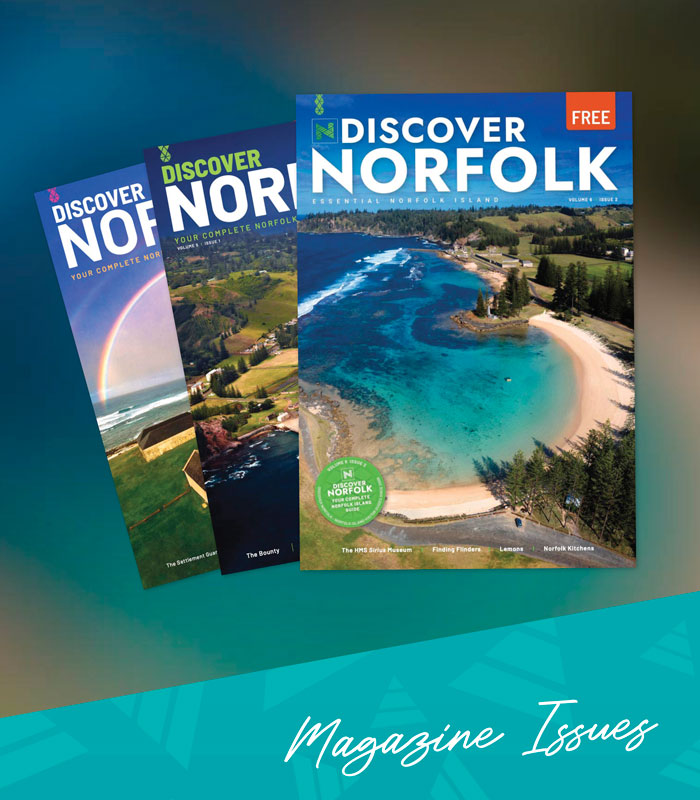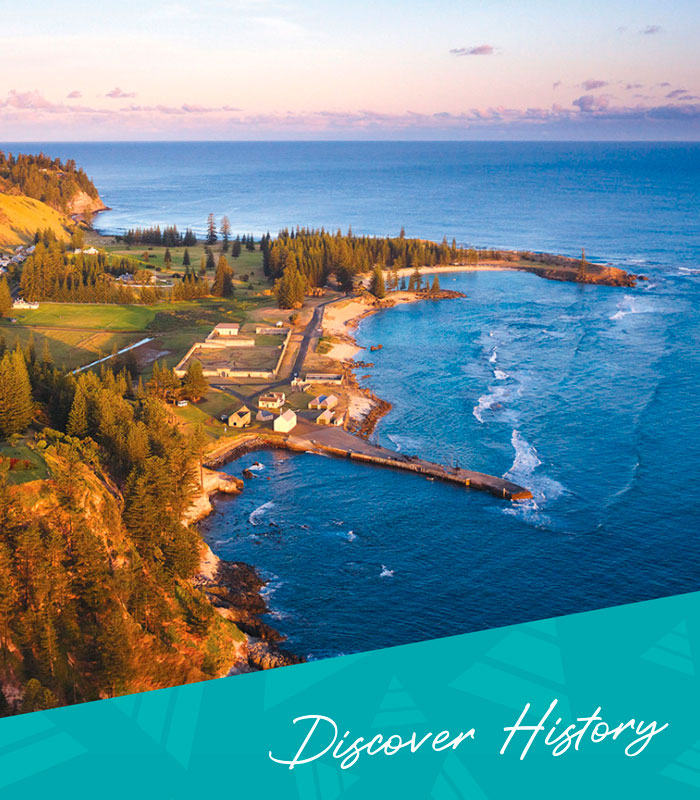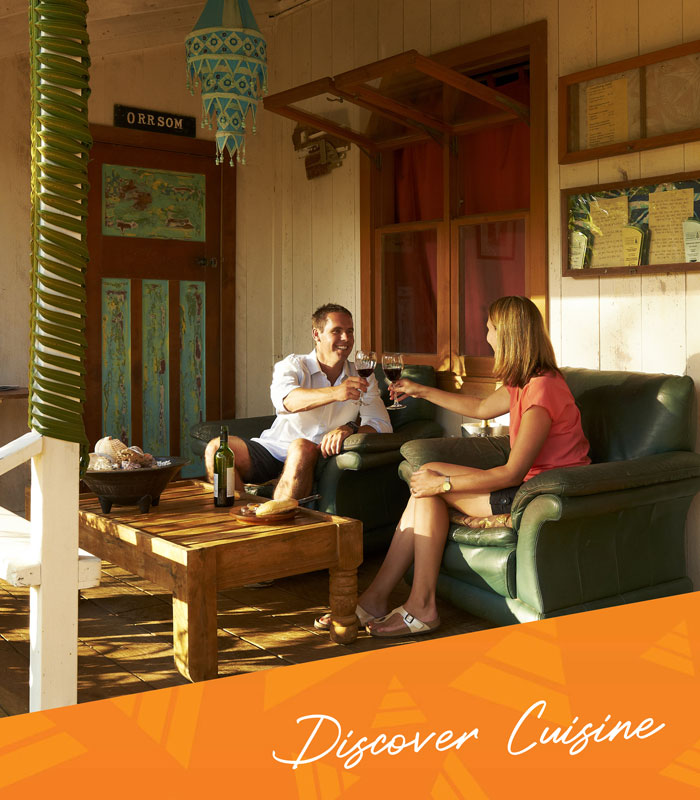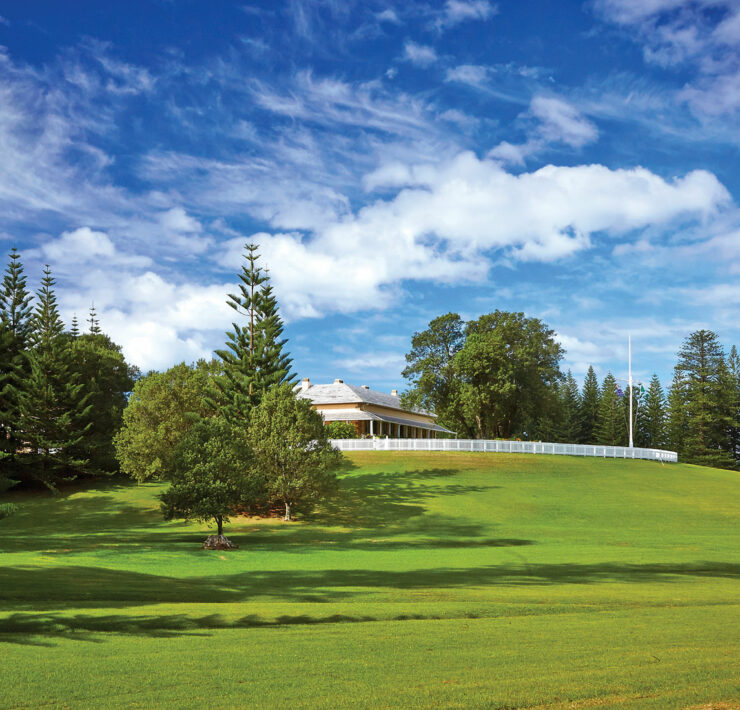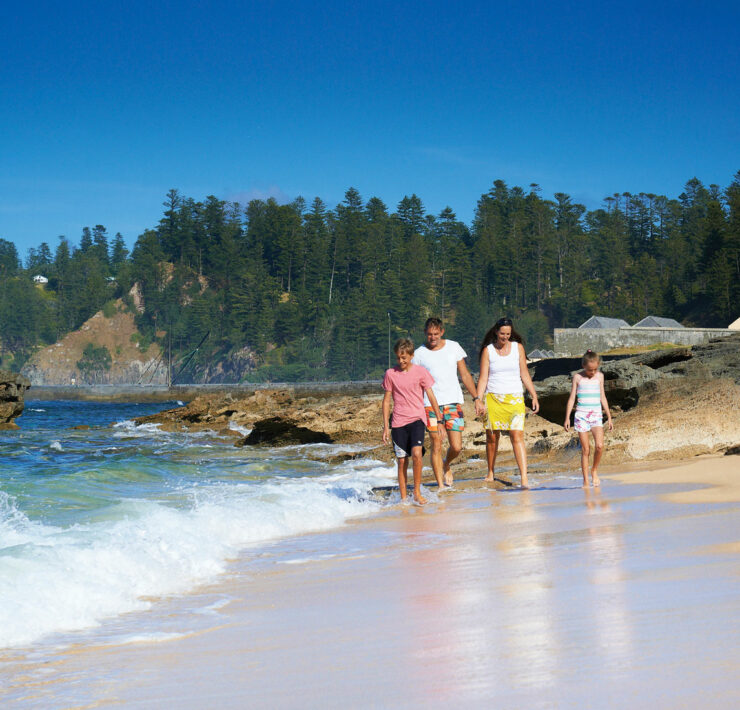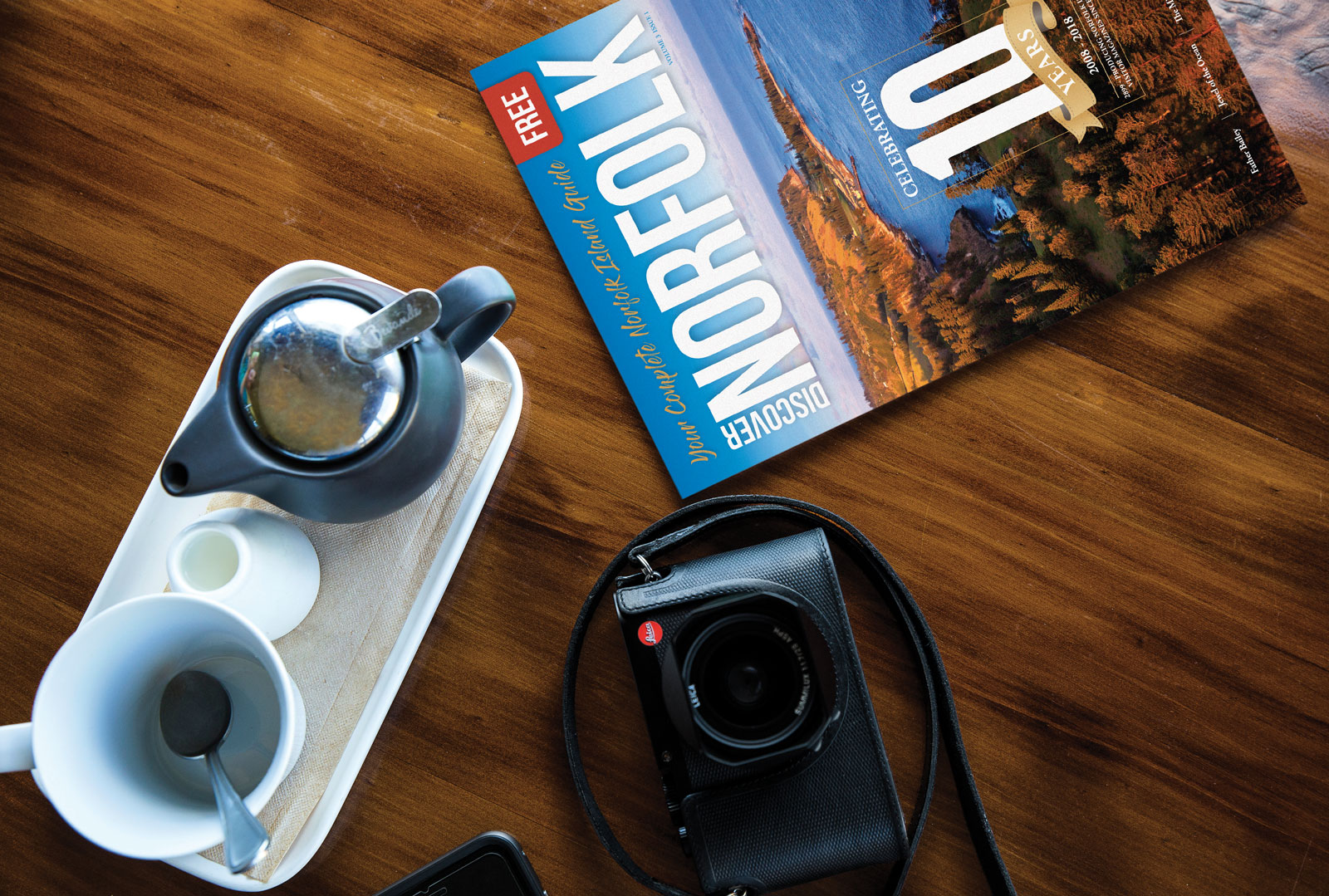Home » All Articles » Bountiful Feasts: Celebrating Anniversary Day
Bountiful Feasts: Celebrating Anniversary Day

Picnics are a longstanding tradition on Norfolk Island. Whether you want to welcome a newcomer, farewell someone who is leaving the island, entertain a visitor, hold a family or community celebration, or simply enjoy a break in the routine, then a picnic is a perfect way to do it.
The ‘pinnacle of picnics’ on Norfolk Island takes place on Anniversary (or Bounty) Day, when the Norfolkers gather together to celebrate being part of a very special community. In many ways it is a ‘national day’ for the island’s people. This significant date in the island’s calendar marks the anniversary of the arrival of 194 family forebears from Pitcairn Island on June 8th 1856. It is the perfect time for mid-year festivities, and a special opportunity to give expression to some very strong island cultural traditions – hospitality, cooking and community pride!
The occasion has been celebrated with great enthusiasm since the early years after the Pitcairners first arrived. In June 1880 it was recorded: “In the shade of the high stone walls a feast was spread, prepared by the famous island cooks, that might reasonably have been expected to feed the whole settlement for a week – sucking pigs roasted island fashion upon hot stones, poultry, pies, tarts and cakes, together with typical Norfolk Island dishesconcocted from kumeras, bananas, and the red and yellow guavas.”
A visitor in 1889 referred to a “monster picnic”, something far more like a sumptuous feast than a casual, light-hearted affair, and a newspaper report in 1915 tells of an enjoyable Bounty gathering, with the usual abundance of food. “A few days ago we celebrated the 59th anniversary of the landing of the Pitcairners on Norfolk Island. A sumptuous repast was spread on the green sward in the shade of the stately pines and spreading banyan trees. What a feast it was! A practical demonstration of the marvellous productiveness of the fertile Isle – roast turkey, succulent chickens, fresh pork, the satisfying Pil-hi, or Island bread, kumera, a kind of sweet potato imported from Pitcairn, fruit in galore (sic), viands of every variety, but all excellent and appetising, with good coffee locally grown, made up a banquet fit for a King.”
In those early years there was very little income, but the gardens were productive, and with hard work and resourcefulness folk were able to feed themselves well, with enough left over to share with visitors and those in need. The fact that the Queen’s Birthday and St Barnabas’ Day also occurred around the same time, created a real holiday atmosphere for both the Pitcairner and the Melanesian Mission communities. It was the custom each year to invite all the students and staff from the Melanesian Mission to the communal picnic, often swelling the number of mouths to be fed by more than two hundred. No doubt the presence of the Bishop and other clergy lent considerable dignity and decorum to the occasion. Nevertheless, Norfolk picnics have always been friendly and joyful occasions, with the island people ensuring that every visitor feels welcome and at home.
Later, in 1946, a description of a picnic held in the presence of the Duke of Gloucester, who was Australia’s Governor-General at the time, reads: “The Duke wore an open-necked shirt and shorts at the picnic luncheon which included platters of chicken, pork and mutton, plates of pilhi, sweet potato, dishes of vegetables, guavas, fried bunches of bananas, sweets and puddings and jugs of cream. Tablecloths were spread six feet wide for 50 yards under the towering Norfolk pines. The visitors had not seen such a profusion of food since before the war and had no scruples in doing justice to the feast, as the islanders had been blessed with plenty throughout the war.”
Over the years, the Bounty celebrations have always involved pageantry and re-enactments, sporting events, and a Ball in the evening. However, it is the lunchtime communal picnic held at Kingston that has always been the focal point of the day.
An older resident recalls the picnics of her childhood: “We were planning for the Bounty Picnic months ahead. Dad would have made sure there was plenty growing in the garden, and that there was a pig, chooks and perhaps a turkey to kill. We would have been ashamed if there wasn’t enough food to feed an army.”
Another Islander reflects on the preparations: “There were no eskies or plastic containers or disposable plates in those days. Every available dish and plate came out, and everything was carefully wrapped in cloths and placed in baskets to make the precarious journey on the back of the cart or the truck to Kingston. We would gather at Auntie’s place the night before, to carve all the meats onto platters.”
The gathering of supplies and cooking still starts well ahead of the day itself. There is no time for last minute preparations, as the picnic follows immediately after the re-enactments and parade. Refrigeration, plus the availability of a wide variety of foods in the supermarket, have made things easier nowadays. The old fuel stoves have largely been replaced by gas ovens and microwaves. Many of the slower, more tedious tasks of food preparation have been made less labour-intensive by modern appliances. But the same love and sense of anticipation still goes into all the build-up and planning. Norfolkers talk about “getting ready for Bounty” weeks ahead. There may be a sucking pig to fatten, and kumeras to cultivate. Many will go out in their boats for fish, so there is a large trumpeter to bake and serve as a decorative centrepiece, and fillets to serve as ‘Tahitian Fish’. There may be an expedition to the rocky shores to gather hi-hi (periwinkles), followed by several hours when the whole family is pressed into duty to pick them from their shells. These will be served in white sauce, or placed into the traditional hi-hi pies. Eggs will be saved to produce sweet pies, cakes and pavlovas. Plun (bananas) will be sought after, in all stages of ripeness. There will be a degree of bartering of supplies between households – perhaps a bucket of avocadoes for a bag of sweet tatie (kumera), some ripe lemons for a dozen eggs.
It is very important at this time to focus on traditional foods, and use the old recipes, handed down through families, from both British and Polynesian origins. The lemon, coconut and passionfruit pies for which the island cooks are famous will appear in great quantities. Those root vegetables which Tahitian forebears loved – sweet tatie, yams and taro – will be served in a variety of ways. While fresh coconuts are no longer available here, the processed forms will appear in many dishes. And a Bounty Picnic would not be complete without ‘Pilhi’ – the traditional vegetable cake made from kumera, ripe banana or pumpkin. Coconut Bread, Sour Milk Bread, Plum Pudding, ‘Mudda’ (green banana dumplings) and ‘Anna’ (kumera mashed with coconut) will also make an appearance on many tables, and everyone will agree how sweet the traditional foods taste, and will become nostalgic about the old days. Invited guests will often bring along dishes with a more modern twist, reflecting changing tastes and the increasing variety of foodstuffs that are available on the island today.
Newcomers are always amazed at the variety of good things to eat at a Bounty celebration. From time to time, visitors have been a little embarrassed when they have produced a humble sandwich or cheese and biscuits for the table, not being prepared for the sheer scale and lavishness of a Norfolk Island picnic. However, the pleasures of communal sharing will prevail, and everyones contribution will be enjoyed and valued. At one time, participants sat around large white cloths spread on the ground. Nowadays, there are usually tables, still covered with a profusion of dishes which exemplify the very best of what the island provides, and the skills of the wonderful island cooks. This is definitely a ‘show and share’ occasion for Norfolkers.
The picnic proceeds with a great deal of camaraderie. There will be invitations to sample this and that dish, an exchange of recipes, and reminiscences of past picnics. When everyone has had their fill, the food is packed away onto the backs of trucks and in the boots of cars, and many will declare that they will not need to eat again for a week. As usual, there has been an over-abundance of ‘wetls’ (food), and the pets and chooks at home will no doubt enjoy sharing in the leftovers.
As the picnickers return home, perhaps to prepare for the Bounty Ball that evening, there is a feeling of warm satisfaction. This has been an occasion to showcase the very best of what comes from Norfolk kitchens, gardens and farms. Not only are bellies full, but everyone is filled with gratitude and pride because they have been able to re-connect with the culinary traditions and the spirit of generous hospitality that has been handed down by generations of Norfolkers.
____
Image Credit: Robin Nisbet
www.robinnisbet.com
____
Article content disclaimer: Article first published in YourWorld, Volume 04 Issue 02, 2014. Please note that details of specific travel, accommodation and touring options may be outdated. References to people, places and businesses, including operating days and times may be have changed. References to Government structure and Government businesses/entities may no longer be applicable. Please check directly with businesses and/or Government websites directly rather than relying on any information contained in this article before you make travel arrangements.



